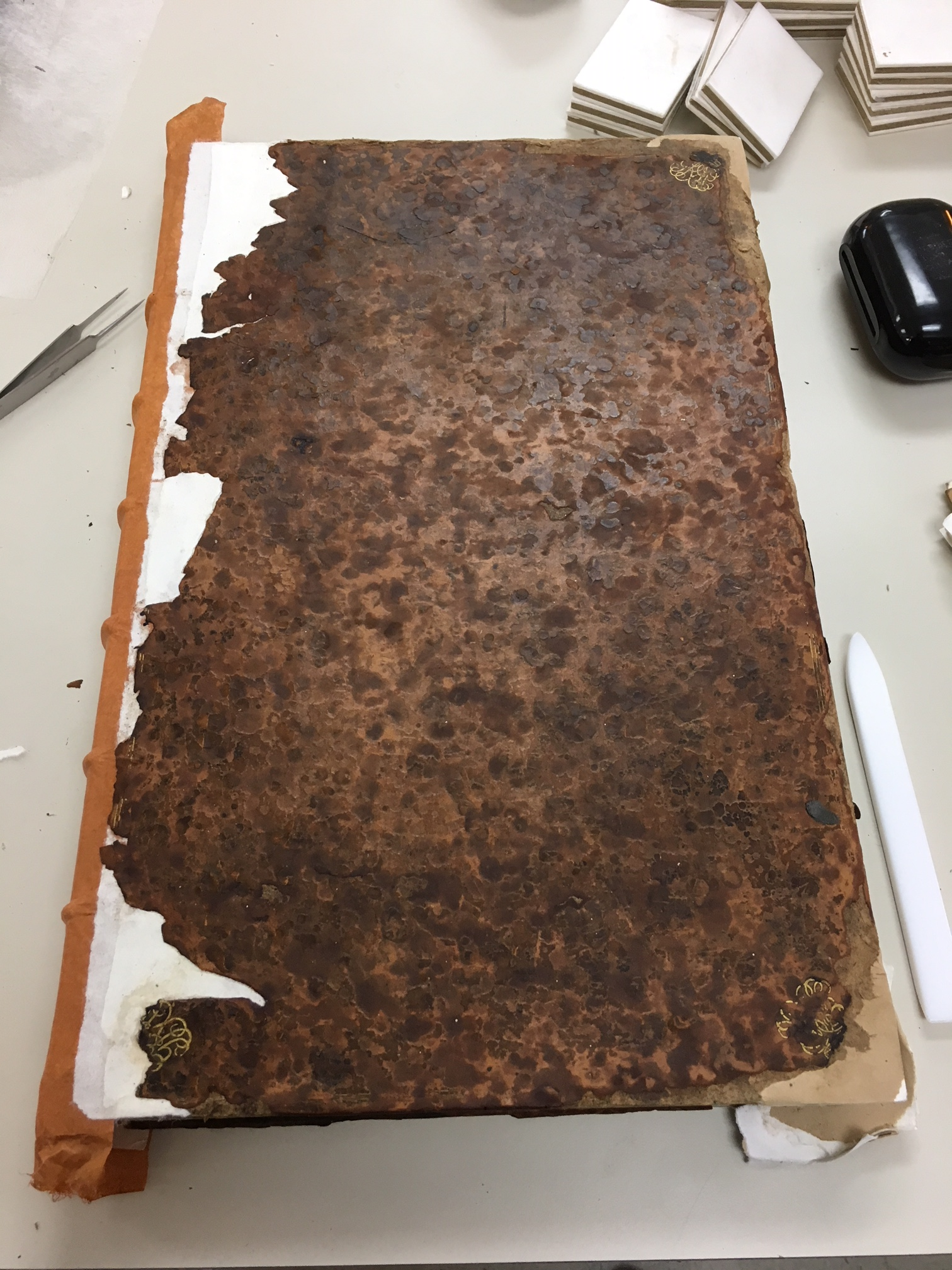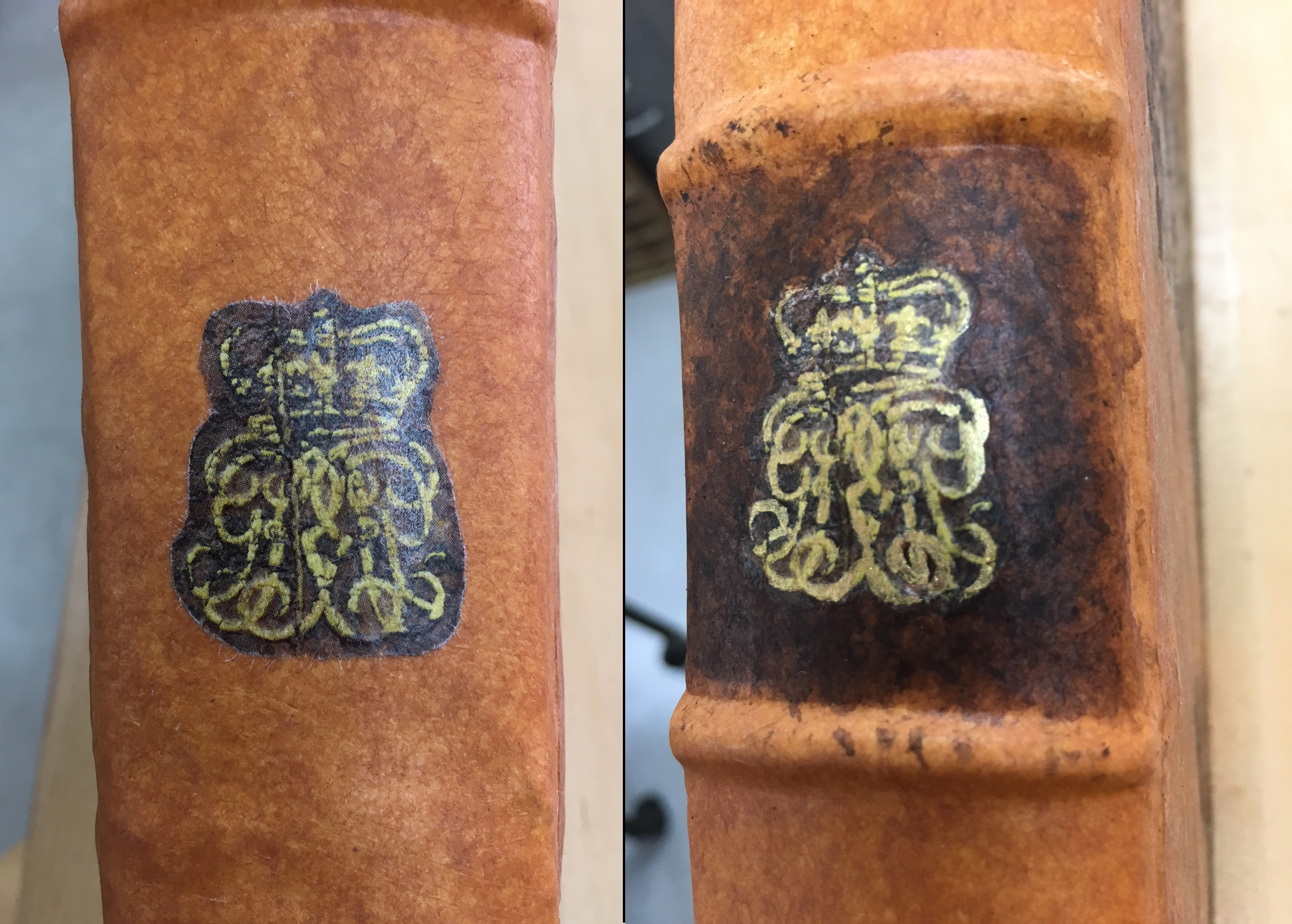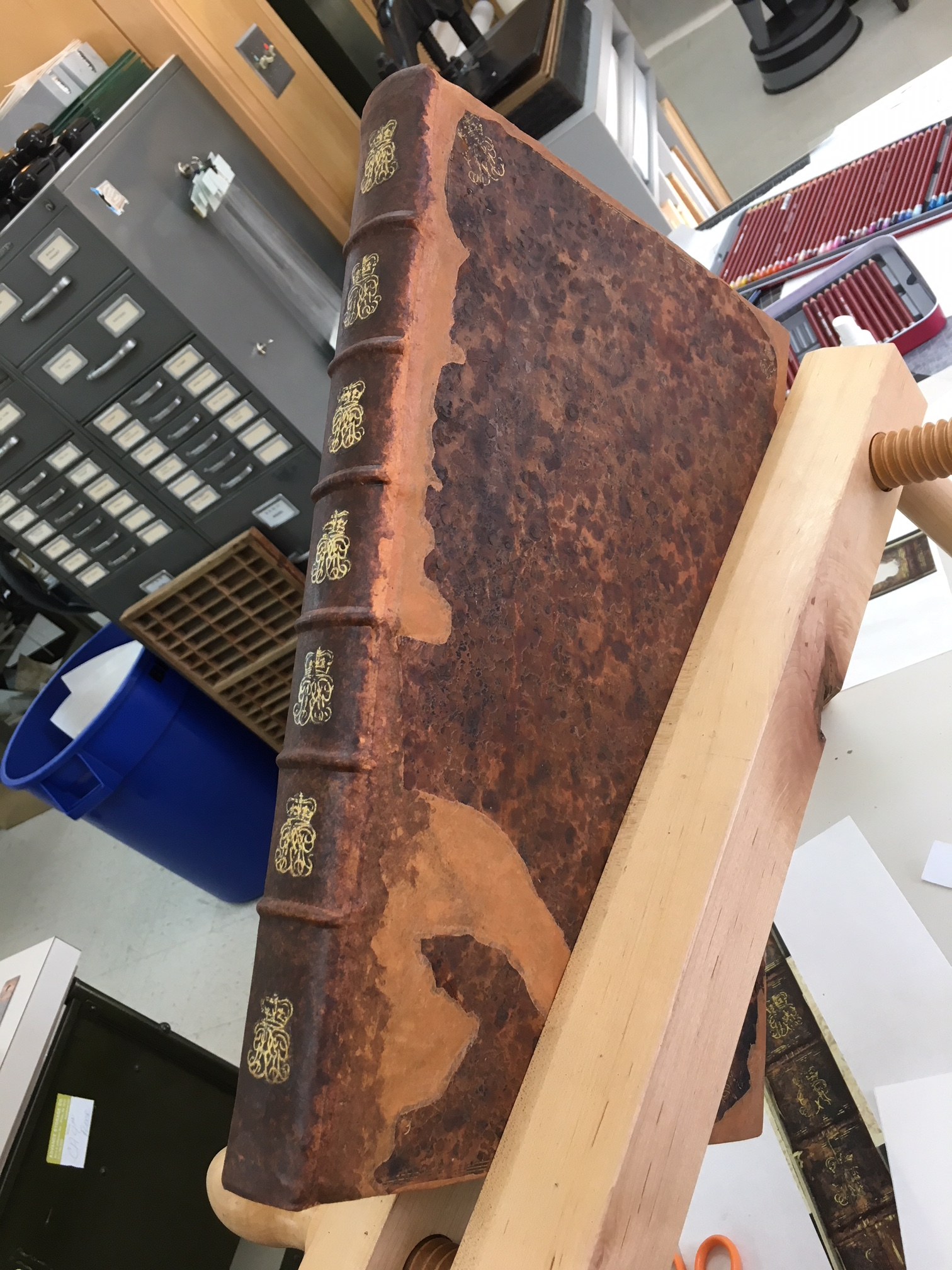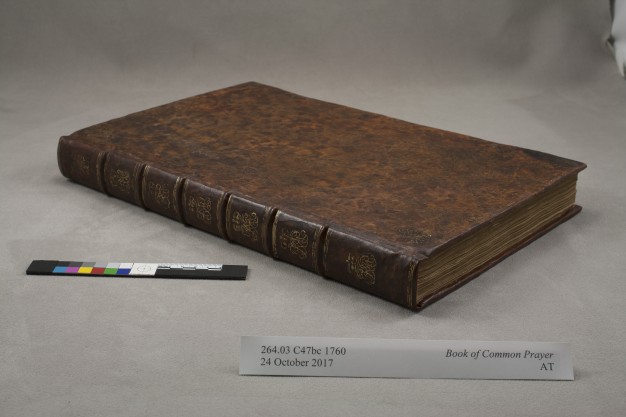Ben Franklin Is Restored
My series on the conservation treatment of Ben Franklin’s 1760 Book of Common Prayer closes with the restoration of the book’s damaged leather binding. Why “restoration” rather than “conservation”? As you can see from the image above, I restored the book to a “like new” appearance. Successful conservation treatment stabilizes an artifact physically and chemically, not necessarily to the extent that it looks undamaged. Restoration involves taking the additional steps required to recreate an earlier aesthetic for the artifact. (In human terms, this book had both life-saving structural repairs and plastic surgery to make it look its best.)
To prepare the detached cover boards for reattachment, I first consolidated the weak, acid-burned, degraded leather. “Red-rot cocktail,” a solution developed at the Conservation Center for Art and Historic Artifacts, uses a synthetic cellulose derivative dissolved in alcohol, as well as a commercial blend of wax and acrylic polymers in alcohol, to help stabilize weakened leather. After consolidation, the leather surface was stronger, smoother, and slightly darker. I lifted the leather from the spine edges of the boards to let my new spine materials be inserted underneath.
I aligned the boards with the re-sewn text block and placed them together in a book press. I then adhered a new spine lining of tightly woven white cotton to the spine and the spine edges of the cover boards. Slits in the fabric let it lie smooth over the raised bands on the spine. I molded a piece of thick, damp Asian paper over the first spine lining, and tied it down over the raised bands so it would hold its shape after drying. For the outermost layer of the new spine, I used cotton cloth laminated to Asian paper that had been colored orange with acrylic paints. All of these materials are known to age far better than modern leathers do, and the orange color gave me a good base coat for further toning of the spine.
I still had a lot of work to do after the old boards were securely attached. First, I used layers of cotton blotter and Western paper to fill the large losses in the old leather until the covers had a flush surface once more. Then I used more orange-toned Asian paper to cover the raw edges of the leather.

To recreate the gold tooling on the spine, I printed the scan I had taken of the original spine onto thin Asian paper. I took the clearest images of the tooled monograms, cut them out, thinned their edges, and pasted them onto the new spine. Then I used acrylic paints on the surrounding paper to recreate the appearance of the old leather.

I used the same process on the paper mends to the cover boards, building up layers of acrylic paint until the new materials blended with the old leather. In the pictures below, you can see the orange paper slowly disappear! When my conservation and restoration work was done, the book was once more intact, strong, easy to open—and gorgeous!



